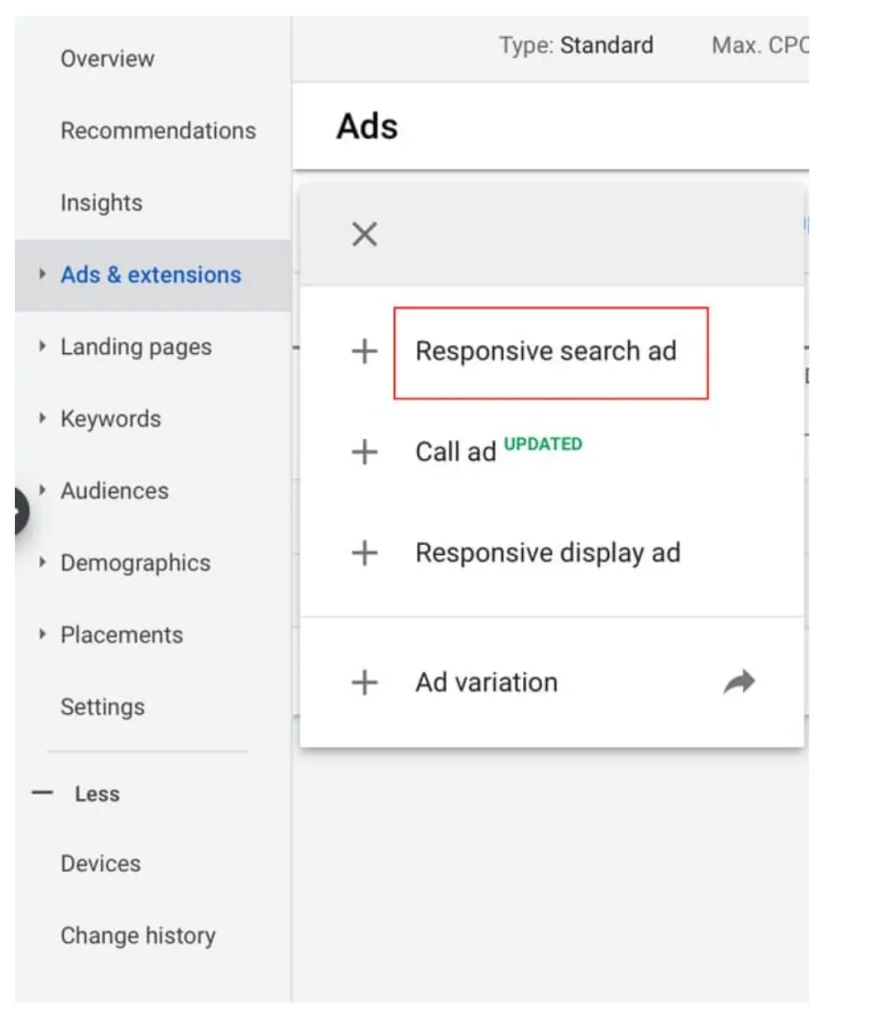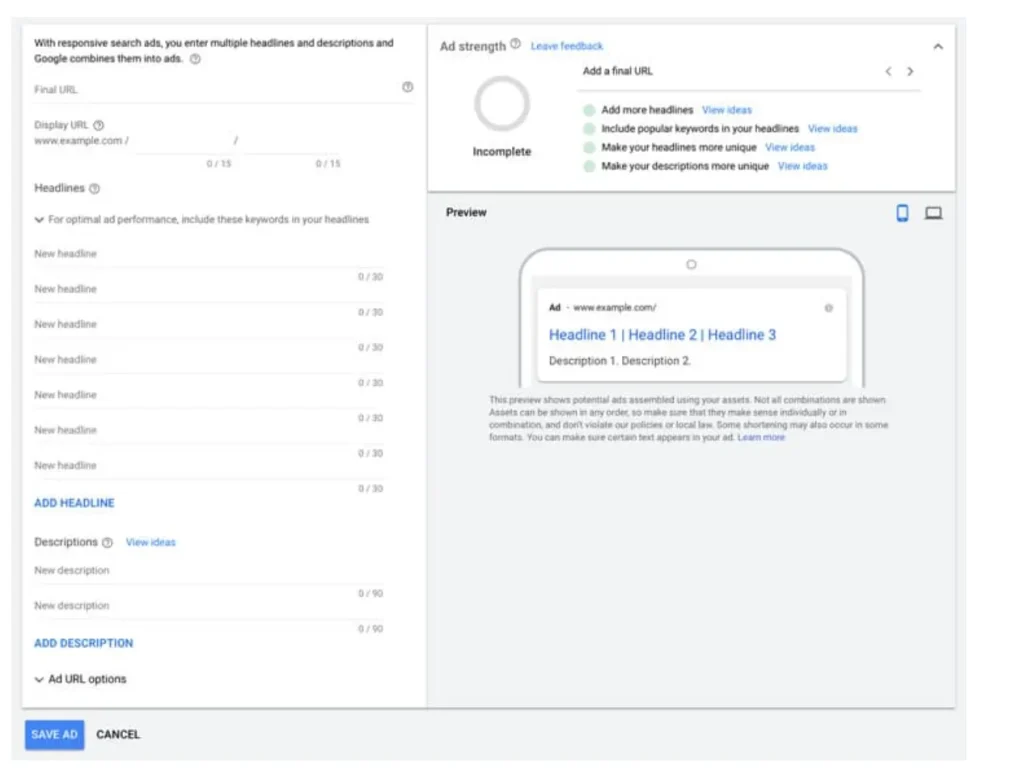What are responsive search ads?
Responsive search ads are a flexible ad format that automatically adjusts to show the most relevant message to a specific customer. When you create an ad, you enter multiple headlines and descriptions. Google’s machine learning systems mix these elements and test different combinations to see which ones work best over time. The result is the most relevant message shown to the customer.
As of February 18, 2021, responsive search ads became the default ad type in Google Ads pay-per-click (PPC) search campaigns. This change is a logical step in light of the increasing automation in Google Ads.
With the ability of responsive search ads to tailor their content to customer search queries, they help you reach more customers and can help drive conversion rates and campaign performance. According to Google, advertisers using responsive search ads can expect to see a 10% increase in clicks and conversions compared to standard text ads.
However, responsive search ads have a much broader set of benefits:
Responsive Search Ad Example
How to set up responsive search ads in your Google Ads PPC search campaign:

Log in to your Google Ads PPC account and select “Responsive Search Ad” from the “Ads” menu.
Go to “Ads & Extensions” in the left menu.
Click the blue “plus” button at the top.
Select “Responsive Search Ad” from the menu

Select a search campaign and ad group.
Enter the final URL (this is the landing page URL).
Enter display paths for the display URL (optional).
Enter at least 5 unique headlines (3 to 15).
Enter at least 2 unique descriptions (2 to 4).
The performance indicator will show how well the ad is doing.
5 Best Practices for Responsive Search Ads in Google Ads PPC
To optimize your responsive search ads and increase clicks and conversions, follow these tips:
Add at least one responsive search ad to an ad group that is performing well or excellent. Google recommends including at least one responsive ad in each ad group. Use the ad strength indicator to evaluate the quality of your ad

Add unique headlines and descriptions. The more unique headlines and descriptions you have, the more combinations you have, which will improve relevance and reach.
Use existing content. Use headlines and descriptions from your previous expanded text ads to create new ones.
Pin your headlines and descriptions. This gives you control over how they appear in your ad, but don’t overuse this feature.
Increase your ad strength. The strength indicator will help you monitor the quality and performance of your ad. Raise it to “good” or “great.”

Conclusion
Responsive search ads are a step towards automation and machine learning in Google Ads. Using them, you can improve the results of your PPC search campaigns. Follow the above recommendations to improve the performance of your responsive search ads and achieve greater results.


